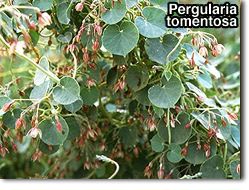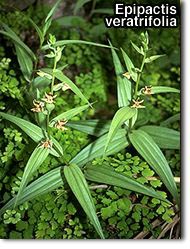 The east coast road affords different views every few minutes. In some places the Hajjar mountains reach to the sea, while in other places extensive palm groves hide white-washed villages. The plantations are often bordered with lush vegetation including Abutilon pannosum , Pergularia tomentosa and Vernonia arabica , while the rocky passes in between have stands of the very common red-flowering Tephrosia apollinea , with here and there a bright yellow patch of the foul-smelling Haplophyllum tuberculatum and the inconspicuous Pulicaria arabica . The east coast road affords different views every few minutes. In some places the Hajjar mountains reach to the sea, while in other places extensive palm groves hide white-washed villages. The plantations are often bordered with lush vegetation including Abutilon pannosum , Pergularia tomentosa and Vernonia arabica , while the rocky passes in between have stands of the very common red-flowering Tephrosia apollinea , with here and there a bright yellow patch of the foul-smelling Haplophyllum tuberculatum and the inconspicuous Pulicaria arabica .
Tidal marshes extend inland from the main road in places just north of Fujairah, which lies in the widest stretch of gravel plain. In the south the coast road ends in one of the largest mangrove forests of southwestern Arabia, Khor Kalba, earmarked to become a nature reserve.
 The next four hours of driving are along a brand new road that leads west again through a few large wadis to the central Hajjar mountains near Hatta.The wadis in the whole mountain range are extremely interesting botanically. Permanent pools and dripping aquifers provide habitats for fragile ferns like Adiantum capillus-veneris which occurs in close conjunction with the only UAE orchid Epipactis veratrifolia. These moist places also harbour Lippia nodiflora, Centaurium pulchella, Bacopa monnieri and Sida urens. Impressive stands of Phragmites australis, Imperata cylindrica and Typha domingensis, with colour added by the wild oleander Nerium mascatense make you forget you are in a desert country. The rocky wadibanks are equally fascinating with the pink clouds of Boerhaavia elegans, the fine sprays of Launaea massauensis, the pink pea Argyrolobium roseum, the delicate grey violets Viola cinerea, the stork's bill Erodium laciniatum and the tiny blue borages Paracaryum intermedium and Gastrocotyle hispida. In some good springs, you can find the tiny-flowered weeds like the poppy Papaver dubium, the yellow flax Linum corymbulosum, the snapdragon Misopates orontium, Euphorbia prostrata, Kickxia hastata and the carnation Dianthus cyri. To find these takes footwork, while bigger plants with showy flowers like Capparis spinosa, Leucas inflata, Reseda aucheri, Cleome rupicola, Physorrhynchus chaemarapistrum, Salvia spinosa and Hyoscyamus muticus can be identified from the car. The next four hours of driving are along a brand new road that leads west again through a few large wadis to the central Hajjar mountains near Hatta.The wadis in the whole mountain range are extremely interesting botanically. Permanent pools and dripping aquifers provide habitats for fragile ferns like Adiantum capillus-veneris which occurs in close conjunction with the only UAE orchid Epipactis veratrifolia. These moist places also harbour Lippia nodiflora, Centaurium pulchella, Bacopa monnieri and Sida urens. Impressive stands of Phragmites australis, Imperata cylindrica and Typha domingensis, with colour added by the wild oleander Nerium mascatense make you forget you are in a desert country. The rocky wadibanks are equally fascinating with the pink clouds of Boerhaavia elegans, the fine sprays of Launaea massauensis, the pink pea Argyrolobium roseum, the delicate grey violets Viola cinerea, the stork's bill Erodium laciniatum and the tiny blue borages Paracaryum intermedium and Gastrocotyle hispida. In some good springs, you can find the tiny-flowered weeds like the poppy Papaver dubium, the yellow flax Linum corymbulosum, the snapdragon Misopates orontium, Euphorbia prostrata, Kickxia hastata and the carnation Dianthus cyri. To find these takes footwork, while bigger plants with showy flowers like Capparis spinosa, Leucas inflata, Reseda aucheri, Cleome rupicola, Physorrhynchus chaemarapistrum, Salvia spinosa and Hyoscyamus muticus can be identified from the car.
|

